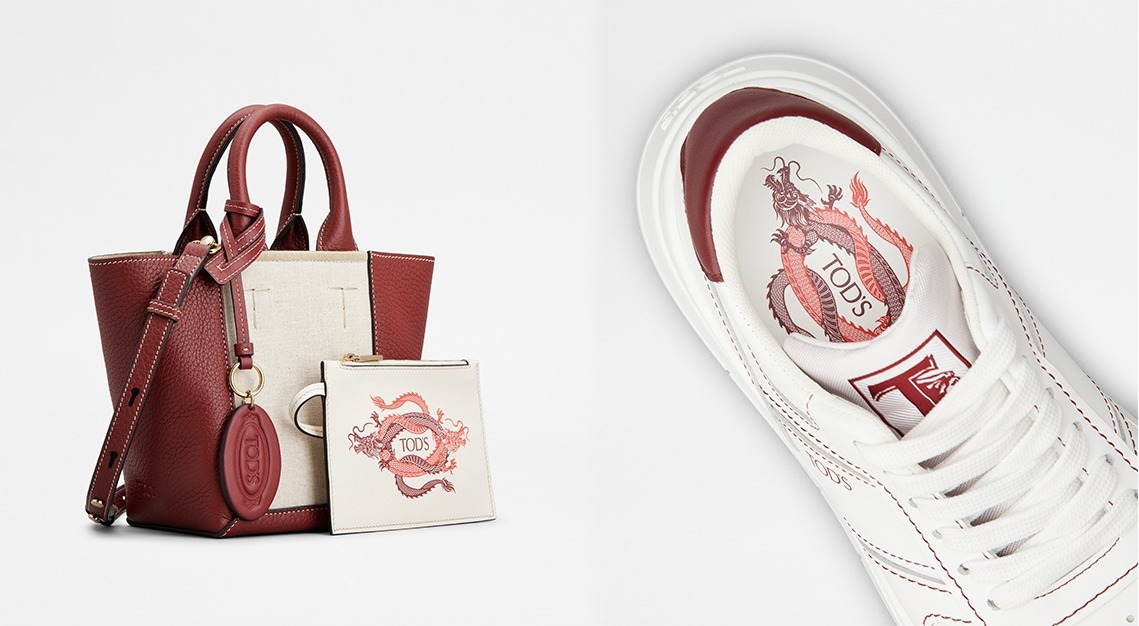As the world of luxury fashion continues to evolve, several exciting developments have caught the attention of fashion enthusiasts and investors alike. From dragon-themed Lunar New Year collections to the blending of old and new at New York Fashion Week, here’s a glimpse into the latest luxury fashion landscape:
1. Dragon-Themed Luxury Collections
To celebrate the Year of the Dragon, luxury watch and fashion brands have launched limited-edition products. These exquisite pieces pay homage to the mythical creature and its symbolism.
Harry Winston is offering eight watches with a red dragon and a pearl in their dial. The prices vary and have not been publicly announced.
The watch has 118 diamonds set in a 18K rose gold case.

French fashion brand Louis Vuitton is selling LV Dragon Vivienne keychains with a cartoonish depiction of a green dragon at $905.
It is also selling a red lacquer box with a wooden dragon in top with leather wings at $2,710.

2. New York Fashion Week 2024
New York Fashion Week (NYFW) has seamlessly blended the old and the new. Established brands, newcomers, and celebrities have graced the runway, showcasing their creativity and vision.
3. The Reign of Quiet Luxury
Attendees at the Badgley Mischka runway show during NYFW emphasized their continued love for the “quiet luxury” trend.
Top Luxury Brands and Their Stock Tickers
Here are three luxury brands to keep an eye on, along with their stock tickers:
- RH (Restoration Hardware):
- Description: A retailer of upscale furniture and home goods.
- Stock Ticker: NYSE:RH
- Notable Features: Known for modern and contemporary designs, RH offers high-end items like $5,000 dining tables and $8,000 leather couches.
- LVMH Moet Hennessy Louis Vuitton:
- Description: The world’s largest luxury company, spanning multiple brands and product lines.
- Stock Ticker: OTC:LVMHF
- Iconic Brands: LVMH owns prestigious names such as Louis Vuitton, Dior, Fendi, and Givenchy.
- Ferrari:
- Description: Maker of luxury sports cars.
- Stock Ticker: NYSE:RACE
- Timeless Elegance: Ferrari’s legendary cars continue to captivate enthusiasts worldwide.
These luxury stocks have outperformed the broader market, benefiting from an expanding global economy and increasing wealth among upper-class consumers. Keep an eye on these brands as they navigate the ever-changing world of luxury fashion.
The Chinese Dragon: How China Roars in the Luxury Fashion Landscape
China’s influence on the global fashion industry is undeniable. From roaring sales figures to shaping industry trends, the rise of the Chinese consumer has been meteoric. Understanding the “why” behind this phenomenon is crucial for any luxury brand hoping to navigate the intricate dance of success in this market.
The Rise of the Affluent Consumer:
China’s booming economy has created a vast pool of affluent consumers with an insatiable appetite for luxury goods. In 2022, China accounted for 46% of global luxury spending, and this figure is projected to rise even further. This spending power is driven by a growing middle class, increasing urbanization, and a shift in values towards conspicuous consumption and self-expression.
Beyond Logos: A Shift in Preferences:
While logo-mania once dominated the Chinese market, today’s sophisticated consumers seek more than just brand recognition. They crave personalized experiences, unique storytelling, and brands that resonate with their cultural values. This translates to a demand for craftsmanship, quality materials, and innovative designs that cater to their evolving tastes.
Digital Natives Shaping the Future:
Digitalization plays a major role in Chinese consumers’ purchasing decisions. Live-streaming platforms, social media influencers, and e-commerce giants like Tmall and JD.com hold immense power. Brands must master the art of digital storytelling, engage with influencers strategically, and offer seamless online shopping experiences to capture this tech-savvy demographic.
Tailoring the Approach:
China is not a monolithic market. Regional preferences, cultural nuances, and generational differences exist. Successful brands recognize this and tailor their product offerings, marketing strategies, and even store designs to resonate with specific audiences. Think beyond a one-size-fits-all approach.
Challenges and Opportunities:
Despite the vast potential, navigating the Chinese market presents challenges. Intellectual property concerns, complex regulations, and a dynamic competitive landscape necessitate careful planning and cultural sensitivity. Brands must build trust, collaborate with local partners, and stay agile to adapt to market shifts.
The Future of Luxury in China:
China’s importance to the luxury fashion industry is not simply a trend, but a defining force. Brands that understand the evolving consumer, embrace digital landscapes, and prioritize cultural relevance will be best positioned to ride the wave of Chinese fashion’s continued ascension.
Shayne Heffernan









